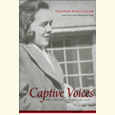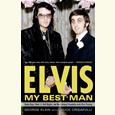Perpetually on the Lam
In On the Run, sociologist Alice Goffman examines the effect of zealous policing on one inner-city neighborhood
It’s no secret that the United States imprisons a staggering number of its citizens, and that a disproportionate percentage of the millions incarcerated, on probation, or on parole are African-American men, most of them poor. There is endless debate about whether America’s zealous lock-’em-up approach is effective in reducing crime, but according to sociologist Alice Goffman it has a profoundly damaging effect on low-income urban communities. In On the Run: Fugitive Life in an American City, Goffman reports her observations from six years spent in a tough Philadelphia neighborhood, where she found that aggressive policing and harsh sentences devastated the lives of young men and presented a major barrier to breaking the cycle of poverty. Moreover, they created an atmosphere in which, as Goffman puts it, the fear of capture and confinement “seeped into the basic activities of daily living,” fostering a kind of permanent fugitive culture that pervaded the entire community.
 Goffman, who is white and comes from a family of prominent scholars, was an undergraduate at the University of Pennsylvania when she began spending time in the mostly black neighborhood she calls 6th Street (a pseudonym) in 2002. She became acquainted with the area while tutoring a high-school student who lived in an adjoining black neighborhood, where she eventually rented an apartment. As she describes it, she “stumbled onto” her formal study after getting to know a group of young men from 6th Street, most of whom had already run afoul of the law. They agreed to serve as subjects for her senior sociology thesis, and the project ultimately expanded to include their families. Goffman chose to stay in the neighborhood and continue her observations after she entered graduate school, and her long sojourn on 6th Street is recounted in On the Run.
Goffman, who is white and comes from a family of prominent scholars, was an undergraduate at the University of Pennsylvania when she began spending time in the mostly black neighborhood she calls 6th Street (a pseudonym) in 2002. She became acquainted with the area while tutoring a high-school student who lived in an adjoining black neighborhood, where she eventually rented an apartment. As she describes it, she “stumbled onto” her formal study after getting to know a group of young men from 6th Street, most of whom had already run afoul of the law. They agreed to serve as subjects for her senior sociology thesis, and the project ultimately expanded to include their families. Goffman chose to stay in the neighborhood and continue her observations after she entered graduate school, and her long sojourn on 6th Street is recounted in On the Run.
The book opens with the story of Alex, one of the 6th Street cohort who was nearing the end of a two-year parole supervision when he was the victim of a brutal, unprovoked attack after a nighttime dice game. The beating broke his nose and jaw, knocked out his teeth, and badly mangled his lips, but he didn’t dare go to the hospital. Why? Because he was out past the 10 p.m. curfew specified in the terms of his parole. “He feared that the cops who crowd the local emergency room and run through their database the names of Black young men walking in the door would arrest him on the spot,” writes Goffman. Determined not to return to prison, Alex went without treatment and was left permanently disfigured, unable to breathe easily through his nose or speak without a lisp.
Seen in isolation, Alex’s story is no more than a sad instance of one guy’s terrible luck. But in the big picture Goffman goes on to provide, Alex’s fate exemplifies everything that’s wrong with the way law enforcement often operates in poor, minority neighborhoods. In the name of cracking down on crime, police maintained more or less constant, bullying surveillance on the residents of 6th Street. They routinely haunted hospitals, funerals, and fast-food restaurants in hopes of picking up anyone wanted for even minor infractions, such as failure to pay court costs. They frequently harassed friends and family, as well, pressuring them to snitch on their loved ones.
 This constant intrusion by law enforcement poisoned ordinary life on 6th Street, breeding distrust and making it impossible for a man who was legally compromised to keep a fixed address, hold a job, get medical care, or care for a family—in other words, to do any of the things that would have helped him establish a “clean” existence. As Goffman puts it, “Such a man finds that as long as he is at risk of confinement, staying out of prison and maintaining family, work, and friend relationships become contradictory goals: engaging in one reduces his chance of achieving the other.”
This constant intrusion by law enforcement poisoned ordinary life on 6th Street, breeding distrust and making it impossible for a man who was legally compromised to keep a fixed address, hold a job, get medical care, or care for a family—in other words, to do any of the things that would have helped him establish a “clean” existence. As Goffman puts it, “Such a man finds that as long as he is at risk of confinement, staying out of prison and maintaining family, work, and friend relationships become contradictory goals: engaging in one reduces his chance of achieving the other.”
Although Goffman reports all she saw on 6th Street in a dry, matter-of-fact style, she manages to bring an array of characters to life, from a crack-addicted mother to a photo-booth operator with a side-line peddling clean urine for drug tests. She conveys a clear sense of how difficult it was for the young men of 6th Street to avoid becoming involved in crime and how heartbreakingly small the rewards were for those who did stay clean. She also paints a vivid picture of what life was like for their mothers and girlfriends, who had an easier time staying out of trouble yet found themselves constantly dealing with the legal system on behalf of their men. Her account gives the lie to rhetoric about individual responsibility being the cure for persistent urban poverty and crime. If her depiction is accurate—and it certainly has a powerful ring of authenticity— there’s no question that the folks on 6th Street were effectively trapped in a system not of their making.
Goffman approached her study with scholarly seriousness, and although she doesn’t overload the text with details, it’s clear that she kept meticulous field notes. She was, however, no detached observer. She became deeply involved in the lives of her subjects, had her own run-ins with the police, and witnessed more than one killing. In “A Methodological Note” at the end of On the Run, she writes at some length about how her experiences on 6th Street affected her. It’s easy to understand why she chose not inject too much of herself into the main body of the book, but her personal story is fascinating in its own right and offers much food for thought about the enormous divide between privileged, mainstream America and the America confined in prisons and poverty.

Maria Browning is a fifth-generation Tennessean who grew up in Erin and Nashville. A graduate of Mount Holyoke College, she has attended the Clothesline School of Writing in Chicago, the Moss Workshop with Richard Bausch at the University of Memphis, and the Sewanee Writers’ Conference. She lives in White Bluff.


